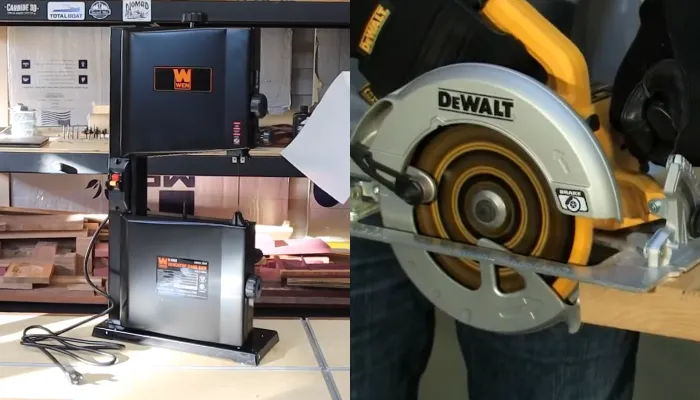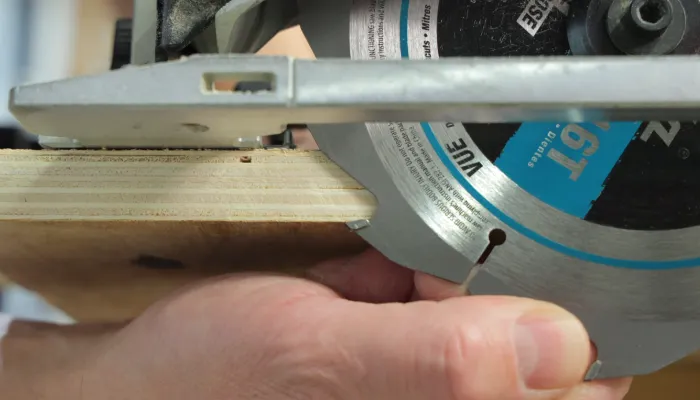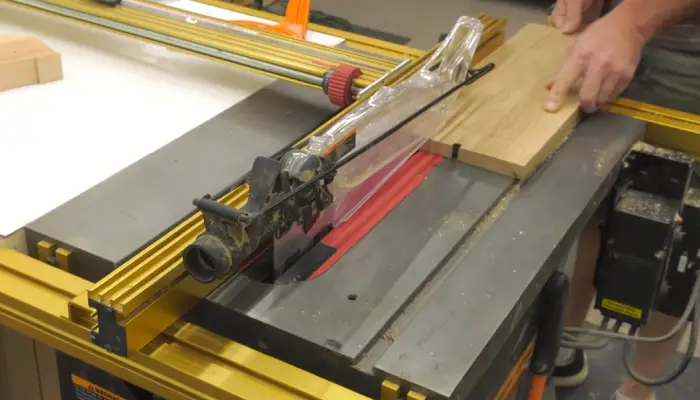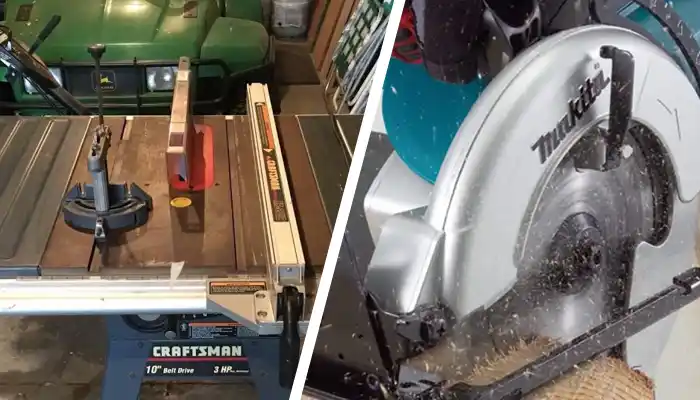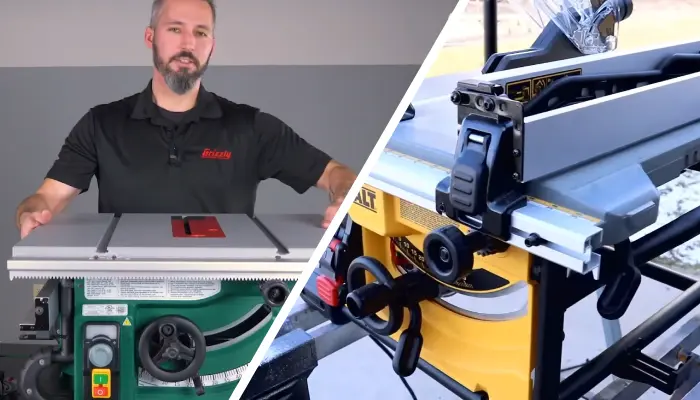Band Saw vs Circular Saw: 11 Key Differences
As a woodworking lover, I’ve often wondered about the band and circular saw’s power and precision. These two formidable tools are the backbone of any workshop, but what are the primary differences that set them apart?
When comparing the band and circular saw, consider the differences in blade types and material handling. The band saw typically uses a long, continuous blade that allows for intricate cuts and the ability to handle larger workpieces.
Conversely, the circular saw uses a round blade with teeth on the edge, making it ideal for straight cuts and faster material removal.
Throughout this article, I’ll discuss the differences between the band and circular saw, uncovering their unique strengths and weaknesses. So, let’s take a look at these saws.
- Powerful 3.5-Amp Motor
- Versatile Two-Speed Operation
- Spacious Cast Aluminum Work Table
- Complete Workshop Package
- Compact Design with Stand
- Powerful 13 Amp Motor
- Lightweight Design Reduces Fatigue
- Versatile 51-Degree Bevel Cuts
- Convenient Spindle Lock for Blade Changes
- Effective Dust Blower for Precision Cuts
Differences Between Band Saw and Circular Saw
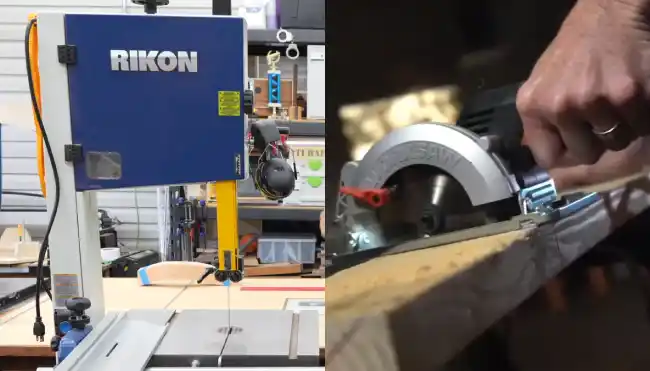
When comparing the band saw and circular saw, I’ve found several differences between these two saws:
- Blade types
- Blade movement and dynamics
- Cutting abilities and versatility
- Cut depth and resawing capability
- Adjustability and precision
- Workspace flexibility and footprint
- Batch cutting and material compatibility
- Size and portability
- Sound levels and operational noise
- Safety considerations
- Cost and productivity considerations
1. Blade Types
I’ve noticed distinct differences in their blade types and material handling capabilities. The band saw supports a range of blade sizes, from half an inch to an eighth of an inch, allowing it to cut different materials with versatility. Its blade design is specifically engineered to handle irregular shapes with precision.
On the other hand, the circular saw utilizes various blades, such as carbide-tipped blades, which are suitable for specific materials like metal. Circular saws excel at making straight cuts efficiently but may require specialized blades to handle diverse materials.
2. Blade Movement and Dynamics
The band saw operates with a continuous loop blade around large top and bottom wheels. This dynamic, flowing motion allows for intricate curved cuts with minimal material wastage.
Conversely, the circular saw utilizes a rotating circular blade fixed on an arbor. The rotational movement of the blade lends itself well to straight, accurate cuts, making circular saws a preferred choice for precision tasks.
While the band saw offers versatility in cutting various shapes and sizes, the circular saw excels in delivering precise straight cuts, making it ideal for tasks prioritizing accuracy and clean lines.
3. Cutting Abilities and Versatility
A band saw and a circular saw possesses different cutting abilities and levels of versatility. With its various blade sizes, the band saw allows for circular and angled cuts and resaw thicker pieces of wood. This versatility makes it suitable for a wide range of woodworking tasks.
Alternatively, the circular saw is primarily designed for straight cuts and excels in cutting thinner boards in straight lines along or across the grain. While it may offer specialty blades for specific cuts, its cutting abilities are more limited than the band saw.
4. Cut Depth and Resawing Capability
The band saw offers a significant advantage when it comes to cut depth. Unlike the circular saw, which is limited by the blade size, the band saw the size of the blade doesn’t confine the cut depth. This allows for greater versatility in handling various thicknesses of materials.
The bandsaw excels in terms of resawing capability. It surpasses the limitations of a typical table saw and can easily handle thicker pieces of wood.
On the other hand, the circular saw, while proficient in straight cuts, may not match the band saw’s resawing capabilities.
5. Adjustability and Precision
The band saw offers a wide range of adjustability with its rotating table, allowing for angled cuts up to 45 degrees. This versatility is advantageous in various woodworking projects. However, the band saw may have limitations in achieving precision comparable to the circular saw.
In contrast, the circular saw is known for its precise straight cuts. It allows for adjustments in blade height and tilting angle up to 45 degrees. This level of adjustability ensures accuracy in woodworking tasks that require different cutting angles.
6. Workspace Flexibility and Footprint
The circular saw often requires a larger working area due to its size, influencing the layout of the woodworking shop. The larger footprint of the circular saw becomes crucial, especially in smaller workshops where space considerations are important.
On the other hand, the band saw’s compact design allows it to take up a smaller footprint in the workshop, making it suitable for compact spaces. This allows for greater flexibility in arranging workstations and optimizing available workspace.
7. Batch Cutting and Material Compatibility
The bandsaw excels in batch cutting due to its ability to make consistent and precise cuts. Its narrow blade and continuous motion allow for efficient cutting of multiple pieces of material at once, making it ideal for woodworking projects that require identical dimensions.
Meanwhile, the circular saw is more versatile in terms of material compatibility. While primarily designed for wood, it can accommodate blades suitable for cutting metal and fiberglass. This flexibility allows the circular saw to handle a wider range of materials than the band saw.
8. Size and Portability

Band saws are generally more compact, such as the 14-inch bandsaw provided. Their size makes them ideal for smaller workshops or spaces with limited maneuverability.
Conversely, circular saws are larger than band saws. While they’re typically fixed tools, portable variants, such as contractor table saws, are designed for job site use. The larger circular saws allow for cutting larger materials and handling more demanding projects. However, their portability is limited compared to band saws.
9. Sound Levels and Operational Noise
The band saw, known for its smooth and continuous motion, produces quieter operation than the circular saw. The band saw’s blade generates less noise, creating a more comfortable working environment.
However, the circular saw can be noisier, especially when cutting through dense or hard materials. The rotational motion of the blade contributes to higher decibel levels than the band saw.
It’s important to note that the operational noise of both saws can vary depending on blade sharpness, material density, and cutting technique. However, in general, the band saw offers a quieter and more pleasant working experience regarding sound levels and operational noise.
10. Safety Considerations
I noticed distinct differences in sound levels and operational noise between the band and circular saw. Regarding safety, the band saw offers some advantages over the circular saw. The continuous downward loop blade on the band saw reduces the risk of injury from kickback.
However, the circular saw can create a dangerous situation where the cut material is forcefully thrown back toward the operator.
11. Cost and Productivity Considerations
When comparing the cost and productivity of a band saw and a circular saw, I find the band saw offers a more cost-effective option.
Band saws have a lower initial cost than circular saws, making them a more affordable option for those on a budget. Additionally, band saw blades are typically less expensive to replace than circular saw blades, further reducing long-term costs.
However, circular saws, particularly carbide circular saws, can provide advantages in terms of productivity. These saws offer high cutting rates and generate less heat, resulting in increased profits and shorter delivery times.
Band Saw vs Circular Saw: Comparison Table
| Feature | Band Saw | Circular Saw |
| Blade Types | Specifically engineered for irregular shapes. | Specific materials excel in straight cuts. |
| Blade Movement and Dynamics | Continuous loop blade around large wheels for intricate curved cuts. | Rotating circular blade fixed on an arbor for precise straight cuts. |
| Cutting Abilities and Versatility | Versatile for circular, angled cuts, and resawing thicker wood. | Primarily for straight cuts, excels in cutting thinner boards along/across the grain. |
| Cut Depth and Resawing Capability | No limit on cut depth, excels in resawing thicker pieces. | Limited by blade size, may not match band saw’s resawing capabilities. |
| Adjustability and Precision | Adjustable rotating table for angled cuts up to 45 degrees. May have limitations in precision. | Adjustable blade height and tilting angle up to 45 degrees for precise straight cuts. |
| Workspace Flexibility and Footprint | Compact design, suitable for smaller workshops. | Larger footprint, may require more space. Important in smaller workshops. |
| Batch Cutting and Material Compatibility | Excels in batch cutting, narrow blade for efficient multiple cuts. | More versatile in material compatibility, suitable for wood, metal, and fiberglass. |
| Sound Levels and Operational Noise | Quieter operation due to smooth and continuous motion. | Can be noisier, especially when cutting through dense or hard materials. |
| Safety Considerations | Continuous loop blade reduces kickback risk. | Risk of kickback, cut material may be forcefully thrown back toward the operator. |
| Cost and Productivity Considerations | More cost-effective initial option. Lower-cost blades. | Higher initial cost. Carbide circular saws offer high cutting rates and increased productivity. |
When would you use a band saw?
A band saw is commonly used for various woodworking and metalworking applications. It’s particularly useful when cutting curves, irregular shapes, or intricate designs in materials. The band saw’s continuous blade allows for greater maneuverability and precision in these cuts compared to a circular saw.
Additionally, the band saw’s ability to make vertical cuts makes it ideal for resawing large lumber into thinner boards. It’s also commonly used with the appropriate blade for cutting materials like metal, plastic, and composite materials.
What should you not do with a band saw?
When using a band saw, avoid cutting materials that may be hardened, such as tool steel, files, hardened guideways, and stainless steel, as well as any material that can’t be cut with a standard hand file. These materials are too hard for the band saw blade, and attempting to do so can damage the blade and cause it to break.
Is a bandsaw worth having?
I believe owning a bandsaw is worth it. The versatility and efficiency of a bandsaw make it an essential tool for various industries.
Firstly, bandsaws can cut through various materials, including wood, metal, and plastics, making them suitable for multiple applications. Whether for personal household projects or professional usage, a bandsaw can handle different cutting tasks with precision and ease.
Additionally, bandsaws provide a clean and accurate cut, thanks to their continuous toothed blade, which minimizes waste and reduces the need for additional finishing work.
Moreover, bandsaws offer excellent control and stability, allowing for intricate and curved cuts that would be challenging to achieve with other saw types.
What is a circular saw best for?
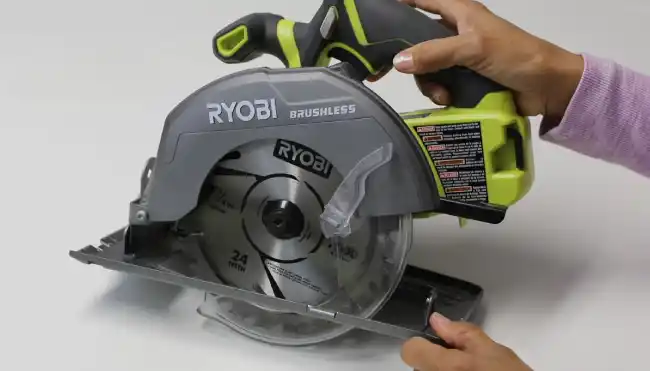
The circular saw is one of the most versatile saws in my tool collection. It excels at a wide range of cutting tasks. This powerful tool is best suited for making straight cuts in various materials.
Its adjustable depth and angle settings allow for precise and accurate cuts. This makes it ideal for crosscuts, ripping, beveling, and plunge cuts.
Whether you need to cut paneling, framing timbers, or cement, the circular saw delivers excellent results. Its portability and ease of use make it a go-to tool for professional contractors and DIY enthusiasts.
Should a beginner use a circular saw?
As a beginner in woodworking, it is essential to consider whether a circular saw would be suitable for my skill level. After conducting thorough research and seeking advice from experienced craftsmen, I’ve concluded that beginners can use a circular saw.
It offers a range of features and benefits that make it a valuable tool for those starting in woodworking. The circular saw’s versatility allows for precise cuts through various materials, including wood, plastic, and metal.
Its compact design and ease of use make it manageable for beginners, while its adjustable depth and bevel settings provide flexibility in cutting angles.
Band Saw or Circular Saw: Choose the Right Tool for Your Woodworking Needs
Band and circular saws are versatile and essential tools in the woodworking industry. However, they offer different benefits and limitations, making them suitable for various projects.
In my honest assessment, a band saw is the best tool for woodworkers who want to make intricate and curved cuts, handle diverse materials, and optimize workspace while staying safe. Alternatively, circular saws are ideal for woodworkers who want to make straight, accurate cuts using metal blades.
Ultimately, your chosen tool will depend on various factors, including project requirements, budget, and workspace. Therefore, assess your tools’ suitability before tackling any woodworking project to maximize productivity.
- Powerful 2.8-Amp Motor
- Versatile Cutting Capability
- Spacious Beveling Work Table
- Comprehensive Accessory Package
- Dependable WEN Quality and Warranty
- Powerful 5150 RPM Motor
- Lightweight Magnesium Construction
- 0-50 Degree Bevel Capability
- Optimized Rubber Grip for Control
- 6-1/2-inch Carbide-Tipped Blade
Last update on 2025-07-12 / Affiliate links / Images from Amazon Product Advertising API

